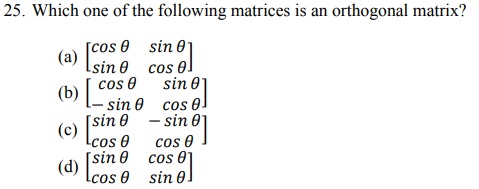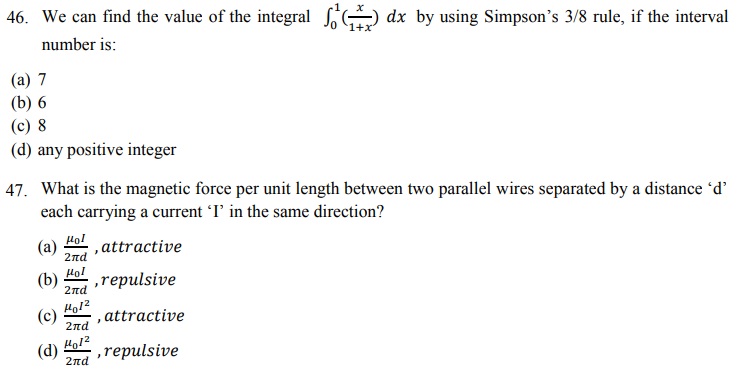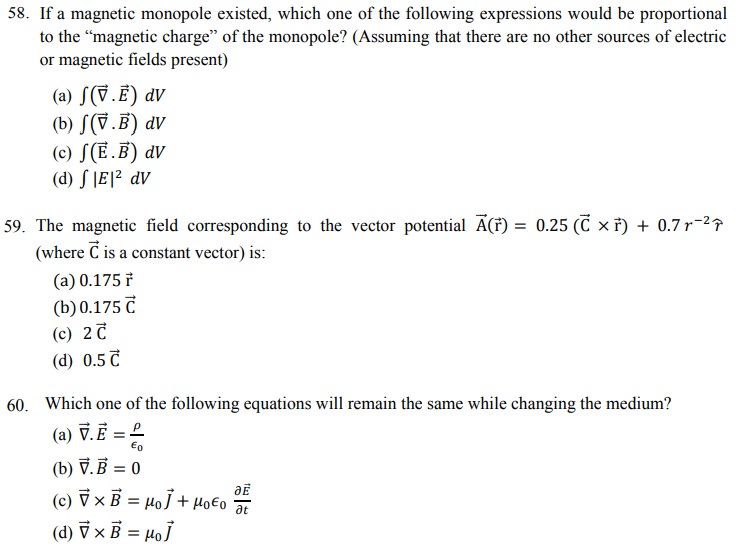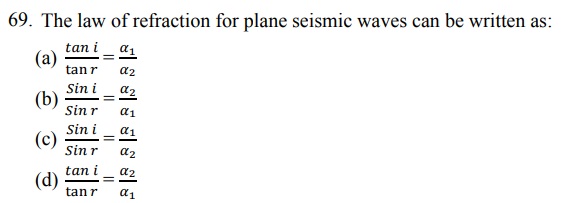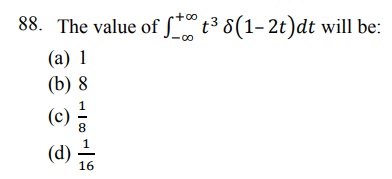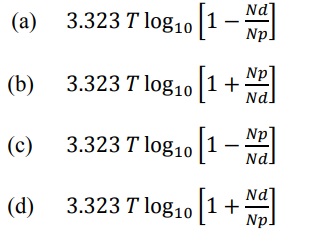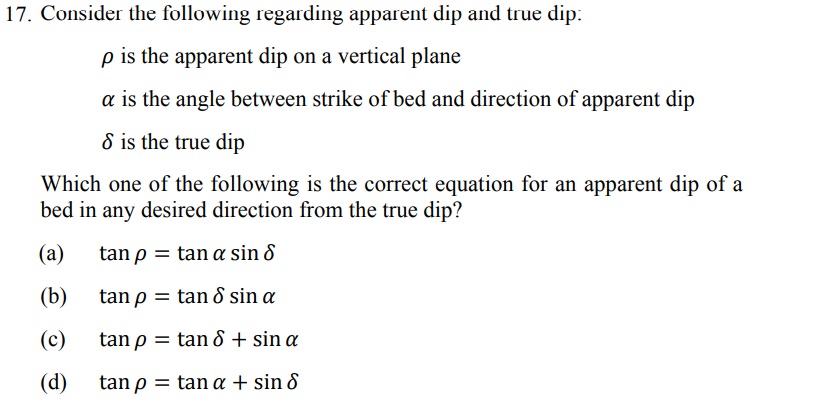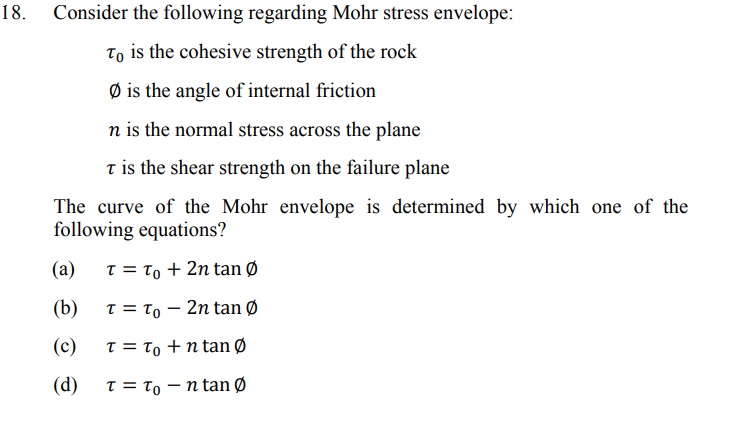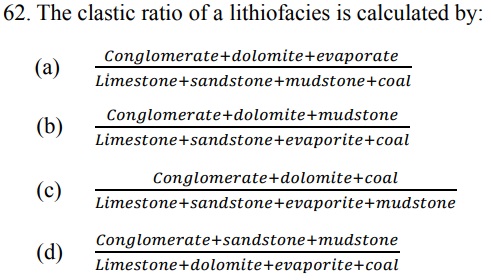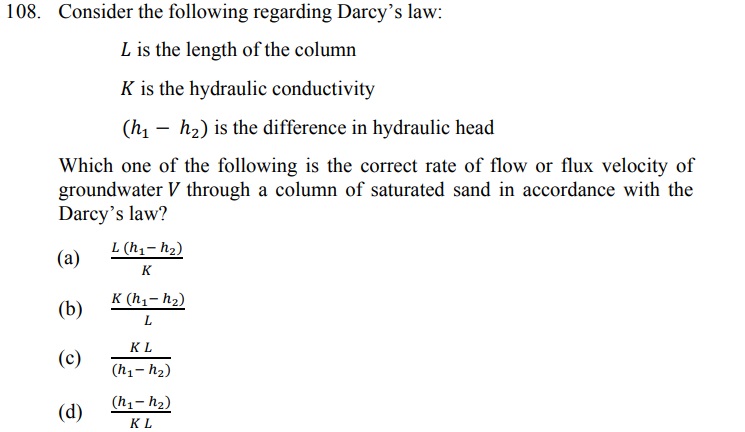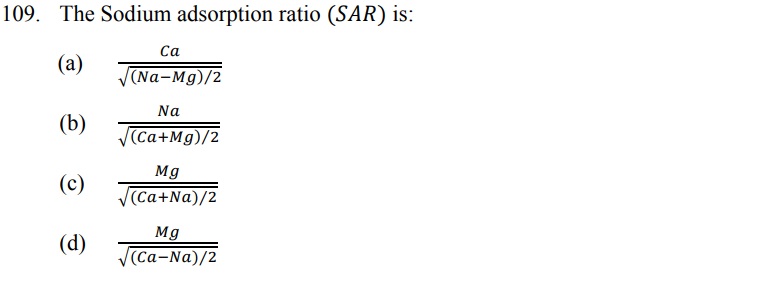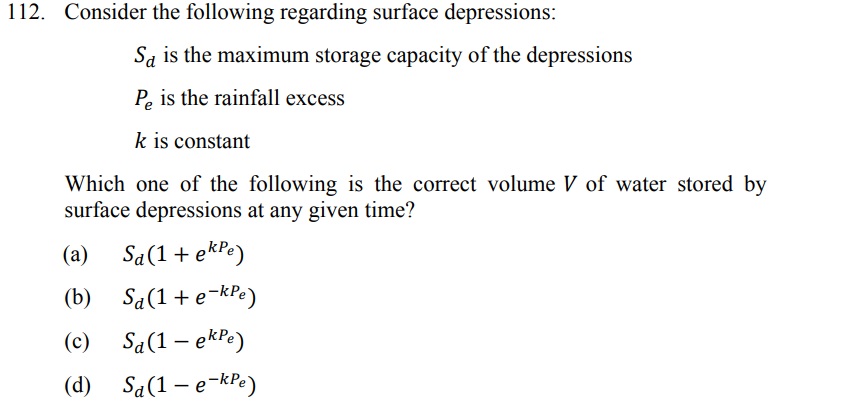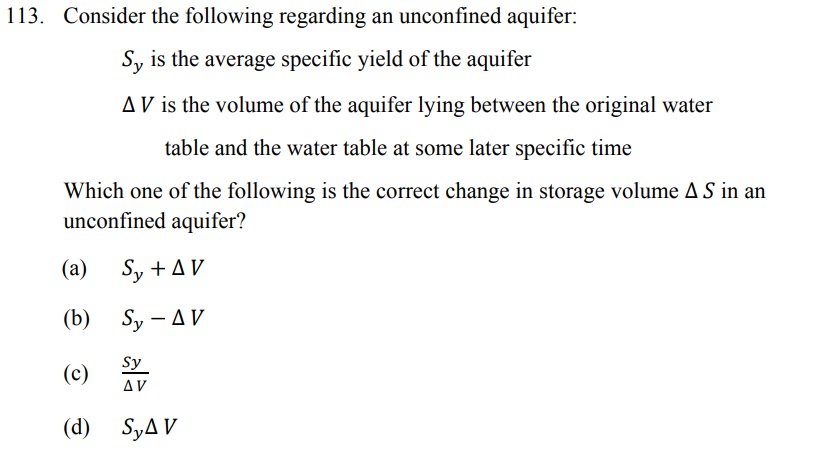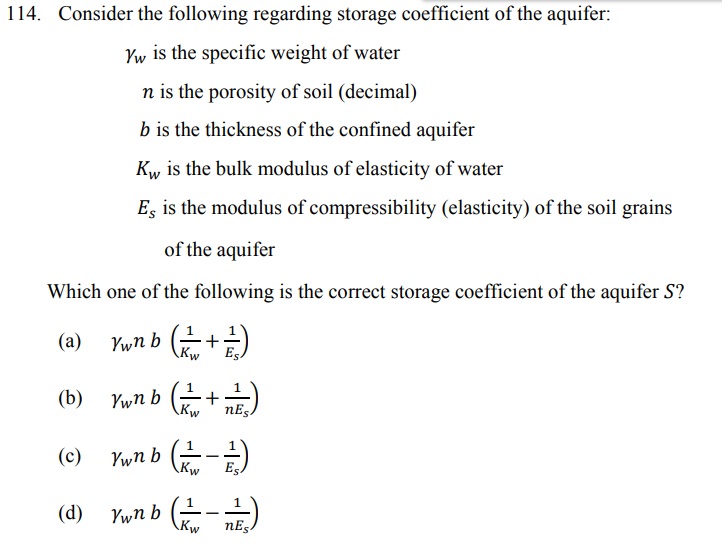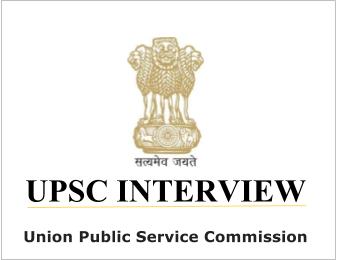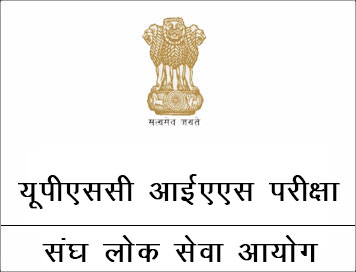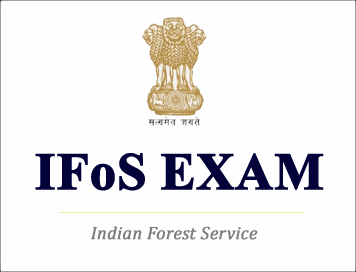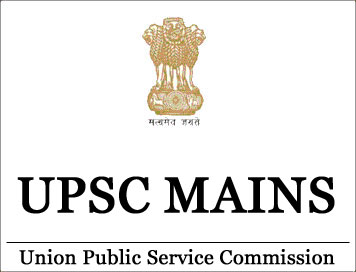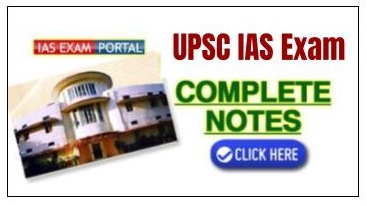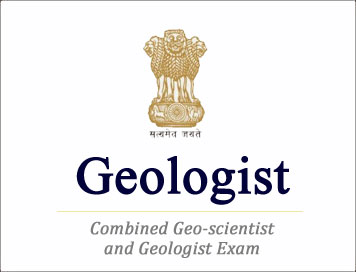
(Download) UPSC: Geologist Examination Papers-2020
(General Studies Paper-I)
Exam Name : UPSC Geo-Scientist and Geologist Exam
Subject : UPSC Geo-Scientist and Geologist Exam Papers 2020 : General Studies Paper- I
Year : 2020
General Studies Paper - I
- Time Allowed : Three Hours
- Maximum Marks : 200
1. Gause`s competitive exclusion principle states that two species:
(a) can coexist if they occupy the same niche.
(b) cannot coexist if they occupy the same niche.
(c) cannot coexist if they occupy the adjacent niches.
(d) can coexist if they occupy similar niches.
2. Chemosynthetic bacteria found near sub-marine volcanic vents feed on:
(a) Hydrogen sulphide (H2S).
(b) Organic matter.
(c) Deep sea tube worms.
(d) Inorganic carbon.
3. Chemoautotrophs are those organisms which obtain energy:
(a) from the oxidation of organic electron donors in the presence of light.
(b) solely from the oxidation of inorganic electron donors in the presence of light.
(c) from the oxidation of organic electron donors in the absence of light.
(d) solely from the oxidation of inorganic electron donors in the absence of light.
4. The amount of sun energy trapped by plants is:
(a) 1 % - 3 %
(b) 12 % - 15 %
(c) 17 % - 20 %
(d) 23 % - 26 %
5. The term wetland implies:
(a) land covered by rain water only.
(b) slow moving water covered wet ground.
(c) water logged wet ground.
(d) fast moving water covered wet ground.
6. The edge effect at the contact of continental fresh water and sea water results in:
(a) non-deposition of sediments due to turbulence.
(b) deposition of sand due to fall in system energy.
(c) deposition of organic matter due to density difference.
(d) flocculation of clays resulting in formation of mud deposits.
7. Heliophile plants require mean maximum illumination of:
(a) 30,000 lux.
(b) 20,000 lux.
(c) 10,000 lux.
(d) 40,000 lux.
8. Which one of the following about anemophilous plants is correct?
(a) Bright coloured flowers
(b) Sweet smelling flowers
(c) No nectar
(d) Dwarf stigmata
9. The salt in sea water comes from:
(a) rain.
(b) chemical exchange between sea water and its substratum as well as hydrothermal emissions.
(c) evaporation of water and concentration of dissolved salts.
(d) mixing of different density waters during natural warm and cold current movements.
10. Biodiversity in terms of species richness is maximum in:
(a) natural grasslands.
(b) semi-natural grasslands.
(c) artificial grasslands.
(d) well maintained and watered grasslands.
11. Which one of the following greenhouse gases is the largest single contributor to anthropogenic radiative forcing?
(a) Methane
(b) Ozone
(c) Nitrous oxide
(d) Carbon dioxide
12. Which one of the following is the main natural source of Methane?
(a) Wetlands
(b) Belching by cattle
(c) Leakage from pipelines
(d) Burning of wood
13. Ozone layer depletion is concentrated in:
(a) mid-latitude regions.
(b) high latitude regions.
(c) equatorial regions.
(d) tropical regions.
14. Which of the following particulate matters (size based) are notified pollutants in National Ambient Air Quality Standards (NAAQS)?
(a) PM 10 and PM 3.5
(b) PM 9 and PM 2.5
(c) PM 10 and PM 2.5
(d) PM 5 and PM 3.5
15. The broad estimates of sea level rise due to global warming by 2100 is approximately:
(a) 10 cm
(b) 20 cm
(c) 30 cm
(d) 40 cm
16. Thermal pollution which involves release of excessive amounts of heated water in aquatic systems is harmful. It is because hot water:
(a) kills aquatic plants.
(b) causes oxygen starvation.
(c) kills aquatic microbes.
(d) causes CO2 depletion.
17. The biological oxygen demand (BOD) of unpolluted river water is:
(a) 10 - 20 mg O2/dm3 /5 day.
(b) 5-10 mg O2/dm3 /5 day.
(c) less than 5 mg O2/dm3 /5 day.
(d) more than 20 mg O2/dm3 /5 day.
18. Pneumatophores are specialized structures for:
(a) maintaining turgor pressure in cells.
(b) providing physical support to plants in marshy lands.
(c) oxygen inhalation by plants.
(d) carbon dioxide release during photosynthesis.
19. Bog ecosystem wetland receives water only from:
(a) Rain
(b) Streams
(c) Rivers
(d) Groundwater
20. Farmers surround the fields with hedgerows during high insolation period to:
(a) prevent the reduction in photosynthetic activity.
(b) reduce evapotranspiration.
(c) create conditions for plants to close their stomata.
(d) prevent wilting of plants.
21. Greenhouse gases are known so as:
(a) they trap heat in the high altitudes.
(b) they act like a greenhouse on the surface of the planet.
(c) the colour of some of the gases emanating from industrial plants are green.
(d) these gases are produced by agricultural crops.
22. Pursuant to the ratification of Convention on Biological Diversity, India legislated Biodiversity Act in the year:
(a) 1992
(b) 1994
(c) 2002
(d) 2014
23. India has committed to reduce emission intensity of its GDP from 2005 levels by 33-35 per cent by the year:
(a) 2022
(b) 2030
(c) 2032
(d) 2035
24. Which one of the following is NOT vested in the Union by the Constitution (Fortieth Amendment) Act?
(a) All mines and minerals lying in the ocean within its territorial waters
(b) All resources of the exclusive economic zone
(c) Fisheries
(d) All things of value in the ocean within its continental shelf
25. Which one of the following is NOT a renewable source of energy?
(a) Wind
(b) Sunlight
(c) Nuclear minerals
(d) Biofuels
26. India’s climate is most affected by which of the following two winds?
(a) North-East monsoon and South-West monsoon
(b) North-West monsoon and South-East monsoon
(c) North-East monsoon and South-East monsoon
(d) North-West monsoon and South-West monsoon
27. Centrally sponsored scheme Ayushman Bharat is a national health insurance system for:
(a) women.
(b) every citizen.
(c) old age people.
(d) poor and vulnerable.
28. Which one of the following statements about Deendayal Antyodaya Yojana is NOT correct?
(a) It is a livelihood mission aiming at alleviation of rural poverty
(b) It seeks to mobilize about 9 crore households into community institutions like self-help groups
(c) It is wage employment scheme for the landless agricultural labour
(d) It proposes to build skills of the poor and to enable them to access formal sources of finance
29. East India Company, to begin with, exported Indian goods to Western countries. Which one of the following is NOT one of the goods in the trade?
(a) Muslin
(b) Calico
(c) Silk
(d) Wool
30. Which one of the following is the common term to describe the main source of water for human withdrawals?
(a) Green water
(b) Hard water
(c) Blue water
(d) Storm water
31. Which one of the following statements regarding the Solicitor General of India is NOT correct?
(a) It is a constitutional position under Article 76 of the Constitution of India
(b) He is appointed by the Appointments Committee of the Cabinet
(c) He assists the Attorney General of India
(d) It is a statutory position
32. Which one of the following is NOT a parliamentary standing committee on financial matters?
(a) Estimates committee
(b) Public Accounts committee
(c) Committee on Members of Parliament Local Area Development Schemes
(d) Committee on Public Undertakings
33. Who among the following is the ex-officio Chairman of the Civil Services Board?
(a) Cabinet Secretary
(b) Chairman, UPSC
(c) Secretary, Department of Personnel and Training
(d) Prime Minister of India
34. The National Statistical Commission was established on the basis of the recommendations of which one of the following commissions/committees?
(a) Rangarajan Commission
(b) Lodha Commission
(c) Santhanam Committee
(d) M.G.K. Menon Committee
35. Which one of the following countries in Asia established the first Export Processing Zone (EPZ) in 1965?
(a) China
(b) India
(c) South Korea
(d) Japan
36. According to the Global Climate Risk Index 2020, published by environmental think tank Germanwatch, in the year 2018 India’s rank in the list of top most climate affected nations is:
(a) 1st
(b) 3rd
(c) 5th
(d) 7th
37. Mission Indradhanush is a scheme pertaining to:
(a) immunization of children.
(b) traditional healing system.
(c) conservation and protection of environment.
(d) welfare of urban street vendors.
38. Which one of the following statements about the Finance Commissions, periodically established by the Government of India, is NOT true?
(a) It recommends distribution of taxes between the Union and the states
(b) It recommends the principles governing the grants-in-aid of revenues of states
(c) It recommends measures to augment the consolidated fund of a state
(d) It recommends measures regarding the salary of government employees
39. The Seventh Schedule of the Constitution of India deals with:
(a) languages.
(b) Union, State and Concurrent Lists.
(c) land reforms.
(d) anti-defection.
40. The Swavalamban Scheme of the Government of India is directed to provide a social safety net to:
(a) senior citizens.
(b) unorganized workers.
(c) women.
(d) new born girl child.
41. Which one of the following is the oldest Para Military Force in India?
(a) Central Reserve Police Force
(b) Assam Rifles
(c) Indo Tibetan Border Police
(d) Border Security Force
42. The Justice J S Verma Committee was constituted in 2012 to propose legal reforms regarding the safety of which of the following sections of Indian society?
(a) Dalits and Backward castes
(b) Women
(c) Religious minorities
(d) Children
43. Who among the following determines as to whether a particular matter (not enumerated in any of the 3 lists) falls under the residuary power of the Parliament?
(a) Lok Sabha
(b) Rajya Sabha
(c) Supreme Court
(d) President of India
44. Why was sub-lieutenant Shivangi in news recently?
(a) First woman officer to receive Sena Medal
(b) First woman officer to be deployed at Nathu La Pass as Signals in-charge
(c) First woman pilot of Indian Navy
(d) First woman officer from the Indian Air Force to summit the Mount Everest
45. Which of the following Five Year Plans emphasized the need for establishing a “Socialist Pattern of Society” in India?
(a) 2nd Five Year Plan
(b) 3rd Five Year Plan
(c) 4th Five Year Plan
(d) 5th Five Year Plan
46. Which one of the following Articles of the Constitution of India deals with Uniform Civil Code?
(a) Article 44
(b) Article 40
(c) Article 39A
(d) Article 41
47. Who among the following envisioned the framework of sustainable development called PURA (Providing Urban Amenities to Rural Areas)?
(a) Jawaharlal Nehru
(b) A.P.J. Abdul Kalam
(c) Atal Bihari Vajpayee
(d) K.R. Narayanan
48. Which one of the following about the Gandhian approach to development is NOT true?
(a) Voluntary limitation of wants
(b) Development of self-sufficient village community
(c) Achieve balance between man and nature
(d) Industrialization and participation of private players
49. The ‘head count ratio’ relates to which one of the following?
(a) The poverty line
(b) Millennium development goals
(c) Food insecurity
(d) Population growth
50. The ministry of Rural Development consists of which of the following departments?
(a) Department of Rural Development and Department of Land Resources
(b)Department of Community Development, Department of Drinking Water and Sanitation and Department of Social Assistance
(c) Department of Rural Development, Department of Community Resources and Department of Drinking Water and Sanitation
(d)Department of Land Resources, Department of Drinking Water and Sanitation and Department of Social Assistance
51. Which among the following states in India is known as ‘Fruit Bowl’ of the country?
(a) Kerala
(b) Himachal Pradesh
(c) Maharashtra
(d) Karnataka
52. The state of Telangana is drained by two major rivers. What are they?
(a) Mahanadi and Godavari
(b) Mahanadi and Krishna
(c) Godavari and Krishna
(d) Krishna and Kaveri
53. Which one of the following states in India produces largest marketable surplus of wheat?
(a) Maharashtra
(b) Haryana
(c) Uttar Pradesh
(d) Punjab
54. Which one among the following states does NOT share boundary with Chhattisgarh?
(a) Bihar
(b) Telangana
(c) Andhra Pradesh
(d) Uttar Pradesh
55. Which of the following two states have the highest per capita income in India?
(a) Punjab and Kerala
(b) Kerala and Goa
(c) Goa and Haryana
(d) Haryana and Punjab
56. Insolation percentage received on Pole as compared to Equator is approximately:
(a) 42 percent.
(b) 68 percent.
(c) 33 percent.
(d) 47 percent.
57.According to Census of India, ‘Main Worker’ is a person who works for at least:
(a) 100 days in a year.
(b) 153 days in a year.
(c) 183 days in a year.
(d) 200 days in a year.
58. Which one of the following states has a different female marriage migration practice in India?
(a) West Bengal
(b) Nagaland
(c) Goa
(d) Meghalaya
59. Which one of the following countries is the top producer of cereals in the world?
(a) USA
(b) Russia
(c) India
(d) China
60. The National Commission on Agriculture (1976) has classified social forestry into how many categories?
(a) Three
(b) Four
(c) Five
(d) Six
61. Which one among the following Union Territories is largest in terms of area?
(a) Chandigarh
(b) Lakshadweep
(c) Daman and Diu
(d) Puducherry
62. Global climates are classified on the basis of:
(a) annual averages in temperature and precipitation only.
(b) annual averages in temperature only.
(c) seasonal variations in temperature and precipitation only.
(d) annual averages and seasonal variations in temperature and precipitation.
63. Which one among the following countries has the highest consumption of food in terms of kcal per day per person?
(a) USA
(b) Australia
(c) Netherland
(d) Saudi Arabia
64. Which one of the following ecosystems has the highest net primary productivity?
(a) Rainforest
(b) Extreme desert
(c) Lakes and streams
(d) Mid-latitude grassland
65. Which one of the following Indian states does NOT have mangrove forest?
(a) Odisha
(b) Telangana
(c) Andhra Pradesh
(d) West Bengal
66. Which one of the following pairs of founder and newspaper is NOT correctly matched?
(a) Bande Mataram – Bankim Chandra
(b) Kesari – Bal Gangadhar Tilak
(c) Bombay Samachar – Fardonjee Marzban
(d) Al Hilal – Abul Kalam Azad
67. Which one of the following was NOT a feature of Criminal Tribes Act, 1871?
(a) Communities of craftsmen, traders and pastoralists were classified as criminal tribes
(b) The tribes were declared criminal on the basis of their profession
(c) The notified criminal tribes were expected to live only in the notified village settlements
(d) The criminal tribes were not allowed to move out without a permit
68. In 1797, under a clause of which one of the following settlements, Raja of Burdwan’s estate was auctioned when he failed to pay the revenue to the East India Company?
(a) Taluqdari
(b) Ryotwari
(c) Permanent
(d) Mahalwari
69. Which one of the following groups of movements/revolts/rebellions/riots is in chronological order (starting from the earliest)?
(a) Santhal uprising, Tebhaga movement, Deccan riots
(b) Kol rebellion, Santhal uprising, Deccan riots
(c) Santhal uprising, Tebhaga movement, Kol rebellion
(d) Kuka revolt, Deccan riots, Santhal uprising
70. Which one of the following statements is NOT correct about Khilafat movement?
(a) It was led by Muhammad Ali and Shaukat Ali
(b) It demanded that Turkish Sultan must retain control over the Muslim sacred places in the erstwhile Ottoman Empire
(c) Khalifa must be left with sufficient territory to enable him to defend the Islamic faith
(d) The Congress did not support the movement
71. Which one among the following groups was known as ‘no-changers’ opposing Congress Party’s entry into Legislative Council following the withdrawal of Non-Cooperation Movement?
(a) Sardar Vallabhbhai Patel, Dr. Rajendra Prasad and Dr. M.A. Ansari
(b) C.R. Das, Motilal Nehru and S.C. Mitra
(c) Anil Baran Roy, Subhash Bose and S. Satyamurti
(d) Srinivas Iyengar and B.S. Munje
72. In which one of the following years did Indian National Congress include in its goal the independence of the Princely States?
(a) 1927
(b) 1929
(c) 1938
(d) 1939
73. The life-size terracotta images of Ganga and Yamuna dating to the period 300-600 AD have been found at:
(a) Ahichchhatra, Uttar Pradesh
(b) Akhnur, Kashmir
(c) Devnimori, Gujarat
(d) Bhitargaon, Uttar Pradesh
74. Which one of the following pairs is NOT correctly matched?
(a) Mohammedan Literary Society – Abdul Latif
(b) National Mohammedan Association – Sayyid Ameer Ali
(c) Mohammedan Educational Conference – Sayyid Ahmad Khan
(d) Anglo-Mohammedan Defence Association – Nawab Muhsin-ul-Mulk
75. Which one of the following gave reserved seats for the Depressed Classes in the provincial and central legislative councils that were to be voted in by the general electorate?
(a) First round table conference
(b) Second round table conference
(c) Poona pact
(d)Government of India Act, 1935
76. Jahangir got impressed by the Turkish fluency of which one of the following European travellers and made him a Mansabdar of 400 sawar?
(a) William Hawkins
(b) Ralph Fitch
(c) William Finch
(d) Thomas Coryat
77. Which of the following statements is / are correct?
1. Shantidas was a leading Jain jeweler and banker in Ahmedabad
2. Shajahan granted land to build poshalas to Shantidas
3. In 1656 Murad Bakhsh granted village Palitana to Shantidas for the use of Jain pilgrims.
The grant was later confirmed by Aurangzeb in 1660
Select the correct answer using the code given below:
(a) 1 only
(b) 1 and 3 only
(c) 2 and 3 only
(d) 1, 2 and 3
78. Which one of the following Sufi saints of Qadiriyya order was condemned by Aurangzeb for his discussion on Wahdat-al-wujud with his father Shahjahan and elder brother Dara Shikoh?
(a) Shaikh Abdul Qadir
(b) Shaikh Hamid
(c) Miyan Mir
(d) Mulla Shah
79. The musical treatise Sangitasiromani was dedicated to which one of the following rulers?
(a) Sultan Sikandar Lodi
(b) Ibrahim Shah Sharqi of Jaunpur
(c) Bahadur Shah of Gujarat
(d) Raja Man Singh Tomar of Gwalior
80. Chronologically arrange the following Sanskrit texts (starting from the earliest):
1. Brihat Samhita of Varahmihir
2. Sushrut Samhita
3. Ashtadhyayi of Panini
4. Natyashastra of Bharat
Select the correct answer using the code given below:
(a) 1, 4, 2, 3
(b) 4, 3, 1, 2
(c) 3, 2, 4, 1
(d) 2, 3, 1, 4
81. At a given temperature and pressure, the force of attraction among the molecules will be highest in case of:
(a) helium
(b) sugar
(c) water
(d) carbon tetrachloride
82. Which one of the following has the similar physical state with water at room temperature?
(a) Iodine
(b) Bromine
(c) Chlorine
(d) Fluorine
83. Which one of the following is the correct sequence of substances having densities in decreasing order?
(a) Iron, Water, Honey, Air
(b) Iron, Honey, Water, Air
(c) Iron, Honey, Air, Water
(d) Water, Iron, Air, Honey
84. Which one of the following statements is correct about camphor and ammonium chloride?
(a) Both of them are inorganic compounds
(b) Both of them are organic compounds
(c) Both of them undergo sublimation
(d) Camphor is an element but ammonium chloride is a compound
85. Number of states of matter known so far is:
(a) 3
(b) 4
(c) 5
(d) 6
86. The scattering of a beam of light by colloidal particles is termed as:
(a) Thomson effect
(b) Raman effect
(c) Tyndall effect
(d) Compton effect
87. Which one of the following is NOT an example of colloids?
(a) Milk
(b) Jelly
(c) Tincture of iodine
(d) Fog
88. The dye in black ink can be separated by the method of:
(a) evaporation
(b) fractional distillation
(c) dialysis
(d) chromatography
89. Name the scientist who was NOT associated with the work of periodic classification of elements?
(a) Dmitri Mendeleev
(b) Robert Bunsen
(c) Johann Wolfgang Dobereiner
(d) John Newlands
90. When 10 g of calcium carbonate is decomposed completely, then 5.6 g of calcium oxide is formed along with the generation of carbon dioxide. Mass of the carbon dioxide formed is:
(a) 4.4 g
(b) 5.6 g
(c) 4.6 g
(d) 4.8 g
91. Which one of the following correctly represents RER?
(a) Endoplasmic reticulum having no ribosomes attached to its surface
(b) Endoplasmic reticulum having ribosomes attached to its surface
(c) Endoplasmic reticulum with rounded vesicles
(d) Endoplasmic reticulum with Golgi appears on its surface
92. Plastids, in which materials such as starch, oils and protein granules are stored, are called:
(a) Leucoplasts
(b) Chromoplasts
(c) Chloroplasts
(d) Chromatophores
93. Which of the following features are found in cells of meristematic tissues in plants?
(a) Cells active with thick cellulose walls
(b) Cells active with little cytoplasm and thin cellulose walls
(c) Cells active with dense cytoplasm, thick cellulose walls, and no nuclei
(d) Cell active with dense cytoplasm, thin cellulose walls and prominent nuclei
94. Squamous epithelial cells are NOT found in:
(a) lining of the mouth.
(b) oesophagus.
(c) skin.
(d) kidney tubules.
95. Cells of which one of the following tissues in animals undergo contraction and relaxation?
(a) Muscular tissue
(b) Connective tissue
(c) Epithelial tissue
(d) Nervous tissue
96. Which of the following organisms are included in Kingdom Protista as given by R Whittakar?
(a) Nostoc, mycoplasma and protozoans
(b) Bacteria, amoeba and protozoan
(c) Anabaena, bacteria and paramecium
(d) Unicellular algae, diatoms, slime moulds and protozoans
97. Which one of the following represents the correct hierarchical sequence of taxonomic categories in ascending order?
(a) Species Genus Order Class Family
(b) Genus Species Order Family Class
(c) Species Genus Family Order Class
(d) Species Genus Order Family Class
98. Which one of the following is the correct sequence of parts in human alimentary canal?
(a) Buccal cavity, oesophagus, stomach, small intestine, large intestine and anus
(b) Buccal cavity, oesophagus, stomach, large intestine, small intestine and anus
(c) Buccal cavity, stomach, oesophagus, small intestine, large intestine and anus
(d) Buccal cavity, stomach, oesophagus, large intestine, small intestine and anus
99. Which one of the following provides buoyancy to aquatic plants to help them float?
(a) Aerenchyma
(b) Tracheid
(c) Guard cell
(d) Sclerenchyma
100. Which one of the following is correct with regards to animals with bilateral symmetry, triploblastic body and true body cavity?
(a) Roundworm, earthworm and leech
(b) Earthworm, leech and nereis
(c) Ascaris, round worm and earthworm
(d) Earthworm, sea cucumber and sea urchin
101. Which one of the following is NOT a unit of magnetic field strength?
(a) Tesla
(b) Gauss
(c) Ampere - metre
(d) Ampere/metre
102. A straight conducting wire carries a DC current through it. Which one of the following statements is true regarding the magnetic field around the wire?
(a) The magnetic field does not depend upon the amount of current flowing through the wire
(b) The magnetic field does not depend upon the distance from the wire
(c) The magnetic field depends upon the material of the wire
(d) The magnetic field decreases with an increase from the wire
103. Which one of the following statements is correct regarding the magnetic field inside a current carrying solenoid?
(a) The magnetic field inside the solenoid is zero
(b) The magnetic field inside the solenoid is uniform at all the points
(c) The magnetic field inside the solenoid increases as we move towards the ends
(d) The magnetic field inside the solenoid decreases as we move towards the ends
104. A current carrying circular loop having n number of turns per unit length has a current I through it. If the current through it and the number of turns per unit length are doubled, then the magnetic field at the centre of the loop will:
(a) remain same.
(b) increase by four times.
(c) increase by two times.
(d) decrease by two times.
105. A metallic wire having length l and area of cross-section A has a resistance R. It is now connected in series with a wire of same metal but with length 2l and area of cross-section 2A. The total resistance of the combination will be:
(a) 2R
(b) 4R
(c) R
(d) R/2
106. Which one of the following statements is true regarding the time period (T) of oscillation of a simple pendulum?
(a) T increases with increase in length of the pendulum
(b) T depends on the mass of the pendulum bob
(c) T decreases with increase in length of the pendulum
(d) T is independent of the length of the pendulum
107. Which of the following statements is NOT true regarding the infrared radiation?
(a) It is electromagnetic in nature
(b) Its wavelength is larger than that of the visible light
(c) It can travel through vacuum
(d) It is a longitudinal wave
108. In a thermos flask, the walls are made of shiny glass. Which one of the following heat loss process is minimised by using shiny walls?
(a) Convection
(b) Conduction
(c) Radiation
(d) Both radiation and convection
109. At atmospheric pressure, the density of water is maximum at a temperature of:
(a) 0 °C
(b) 4 °C
(c) –4 °C
(d) 1 °C
110. Which one of the following statements is NOT true about the sound waves?
(a) Sound waves are longitudinal in nature
(b) Sound waves can propagate through water
(c) Speed of sound waves in steel is more than its speed in air
(d) Sound waves can propagate through vacuum
111. Which one of the following countries was ranked 1st in the IMD World Competitiveness ranking 2019?
(a) Singapore
(b) USA
(c) India
(d) Switzerland
112. According to a UN Report, which one of the following countries has the highest number of living indigenous languages in the world?
(a) India
(b) Papua New Guinea
(c) South Sudan
(d) Fiji
113. Shanti Swarup Bhatnagar Prize is given as recognition of outstanding Indian work in the field of:
(a) Arts and crafts
(b) Journalism
(c) Science and Technology
(d) Medicine
114. Who among the following became the first woman officer of the Indian Air Force to be appointed as the Flight Commander of a flying unit?
(a) Shaliza Dhami
(b) Bhawana Kanth
(c) Anuradha Shukla
(d) Nivedita Choudhary
115. How many member states are there in CARICOM, a grouping of Caribbean nations?
(a) 10
(b) 12
(c) 15
(d) 18
116. The International Astronomical Union has named an asteroid after an Indian singer. Name the singer:
(a) Lata Mangeshkar
(b) Pandit Jasraj
(c) Bhimsen Joshi
(d) Kumar Gandharva
117. Saraswati Samman is instituted by:
(a) Smile foundation.
(b) Gandhi Peace Foundation.
(c) K K Birla Foundation.
(d) Kamal Kumari Foundation.
118. Football team of which one of the following countries was defeated by Indian football team to won the South Asian Football Federation (SAFF) under-18 Football Championships 2019?
(a) Nepal
(b) Pakistan
(c) Sri Lanka
(d) Bangladesh
119. International Day for Total Elimination of Nuclear Weapons is celebrated on:
(a) July 26
(b) August 26
(c) September 26
(d) October 26
120. ‘Surya kiran’ is a joint military exercise between the militaries of India and:
(a) Bangladesh
(b) Sri Lanka
(c) Nepal
(d) Bhutan






